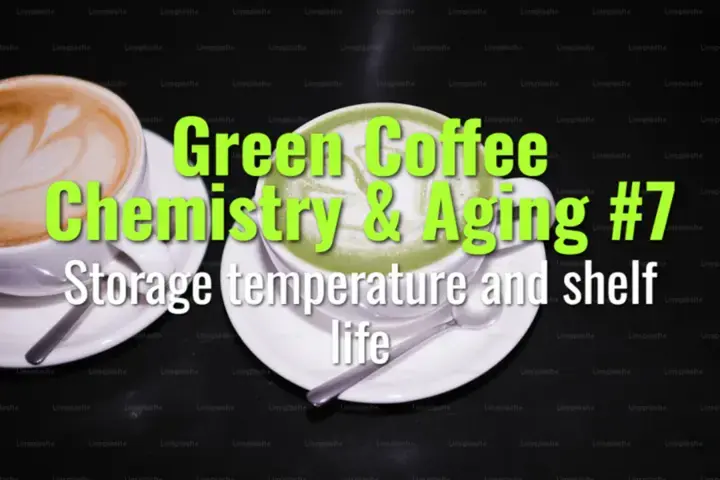Storage temperature and shelf life
This topic explains how storage temperature affects the shelf life of green coffee, the chemistry behind flavor loss, and the best practices to preserve freshness and quality.
- Coffee Basics Nerds
- 2 min read
Article 7 of 12 in Green Coffee Chemistry & Aging/

Why Temperature Matters
- Green coffee is chemically active even in storage.
- High temperatures accelerate oxidation, lipid rancidity, and acid degradation.
- Low, stable temperatures slow aging and preserve cup quality.
Shelf Life Expectations
- Ideal conditions (18–22°C, 55–65% RH, hermetic packaging): 9–12+ months for specialty coffee.
- Warm conditions (>25°C, high humidity): 3–6 months before noticeable staling.
- Cool, dry storage (<18°C, controlled humidity): up to 18 months possible.
Temperature Effects on Chemistry
- Above 25°C: Faster breakdown of chlorogenic acids → bitterness.
- Lipids oxidize more quickly → cardboard, rancid notes.
- Sugars degrade → reduced caramelization potential during roasting.
- Acids fade → loss of brightness, flat flavor profile.
Monitoring Shelf Life
- Sensory cupping every 3–6 months.
- Track moisture % (10–12%) and a-w (0.55–0.65).
- Record storage conditions (temperature & humidity logs).
Best Practices for Temperature Control
- Use insulated warehouses or climate-controlled storage if possible.
- Avoid storing coffee near heat sources (metal walls, direct sunlight).
- Use pallets and spacing to improve airflow.
- Ship during cooler seasons when possible to reduce transit risk.
Market Implications
- Specialty buyers expect freshness and consistency → poor storage reduces contract value.
- Aging reduces cupping scores, leading to discounts or rejections.
- Properly stored coffee can extend marketing windows for high-value lots.
Lasting Importance
Storage temperature is a primary driver of green coffee shelf life. By maintaining cool, stable conditions, producers and buyers preserve sweetness, acidity, and aroma, ensuring coffee arrives at roasters fresh, vibrant, and true to origin even months after harvest.
You might also like:
- Tags:
- Lasting Importance
- Green Coffee
- Best Practices
- Specialty Coffee
- Cup Quality
- Shelf Life
- Flavor Profile
- Cupping Scores
- Specialty Buyers
- Sweetness Acidity
- Temperature Control
- Market Implications
- Storage Conditions
- Producers Buyers
- Chlorogenic Acids
- Implications Specialty
- Cool Dry
- High Humidity
- Hermetic Packaging
- Coffee Arrives
- Temperature Humidity
- Poor Storage
- Ensuring Coffee
- High Value
- High Temperatures
- Flat Flavor
- Cool Stable
- Sensory Cupping
- Storage Temperature